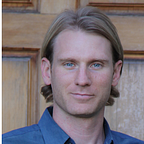Can wearables improve factory conditions?
Understanding the round-the-clock needs of factory workers
Whether you’re an aspiring ethical consumer or a champion in your company’s Corporate Social Responsibility (CSR) space, wearable technology has the potential to amplify what we know about the lives of workers, both inside and outside of the factory. Increased worker visibility is essential for identifying labor abuses and protecting workers while they are on the job. However, it’s nearly impossible to know what workers are experiencing once they leave their factory, which can be equally consequential to their safety and well-being.
In the past few years, thousands of Cambodian garment factory workers are fainting on the job. These cases could be the result of poor working conditions (exposure to chemicals, poor ventilation, exhaustion from excessive hours), or they could be due to external factors such as lack of sleep, poor nutrition, or exhaustion from an additional job.
In order to better understand the round-the-clock needs of workers, we recently piloted wearables on garment factory workers in Phnom Penh, Cambodia.
Piloting wearables on factory workers:
Our Laborlink team partnered with two pioneering organizations — CARE International in Cambodia and Calorie Cloud — to develop a minimum viable product for trial. Together, we issued simple, cheap (< $10/device) wearables to 200+ workers at two medium-sized apparel factories. We asked workers to wear the device continuously for two-weeks, either on their wrist or their belt.
The device tracked step-counts in 15-minute intervals, quantifying workers’ day-to-day behavior before, during and after work. Workers returned their wearable at the pilot’s conclusion and received a small gift. Workers opted-in to the program after attending an introduction meeting and all data gleaned from the devices was kept confidential and anonymous.
True transparency for working hours:
We learned a tremendous amount from our pilot, both in terms of how to effectively distribute wearable devices to workers, as well as what trends can be identified from simple worker-activity data-sets. We were able to identify patterns in the data showing immutable evidence of working hours, break frequency and duration, and rest days at our pilot locations. We also saw instances of worker exhaustion related to extensive overtime. And since we were able to tie our devices to user demographics, we could analyze differences between positions, departments and factories for bench-marking and comparison.
Variations of sleep pattern data:
Just as interesting was what we discovered about workers beyond the workplace. Many pilot participants kept their devices on 24/7, including non-working days. We were able to profile workers’ daily commutes, and see common behaviors taking place (e.g. stopping to pick up kids). We also saw instances of people working a different job during their rest day from the factory. Furthermore, we could track workers leisure hours and sleep duration. This type of data has the potential to stretch what is expected of the CSR function, if true worker well-being is our goal.
Key-findings of wearables pilot:
Pilot results suggest that even basic wearables on factory workers can provide useful intelligence to the CSR-function of major brands and retailers. We also believe wearable data can help solve issues for other business segments, as well as factory management. And, given workers’ positive attitude toward the program — nearly all our participants said they would do it again — we intend to take this work forward. Here are some next steps:
- Refine implementation — Like any pilot, we made our share of mistakes and had to “fail forward”. For example, our wearables were prone to a desynchronized clock drift during the first launch, which we systematically corrected-for during our second launch. However, there is more work to be done. In particular, we must streamline our worker introduction, reducing the human resources required, yet ensuring workers have enough information to make informed opt-in/out decisions.
- Explore upgraded devices — 95% of the devices we issued during the pilot were returned in working order. That, combined with the falling price of wearables, means we may be able adopt devices with additional functionality, without compromising scalability. Most workers wanted to wear devices on their wrist (it being “more stylish”), which allows us to integrate devices with heart-rate monitors. That functionality would facilitate additional analysis, such as monitoring worker stress- and exhaustion-levels in real-time.
- Combine with Laborlink —Good World Solutions already has contact with one million factory workers around the world via our voice- and chat-based surveys. Combining that medium with wearable data would provide a second-tier of analysis that allows us to develop increasingly predictive models related to worker welfare and productivity. In other words, combining what workers say with what they actually do makes each data-set much more robust.
- Find a sponsor — Do you have a worker well-being or business goal that could be enhanced through wearable data collection? We’re still accepting partners for the next round of testing, which begins soon!
Please contact info@goodworldsolutions.org for questions and inquiries.
If you liked this article, please press the 💚 below for other people to see it.
